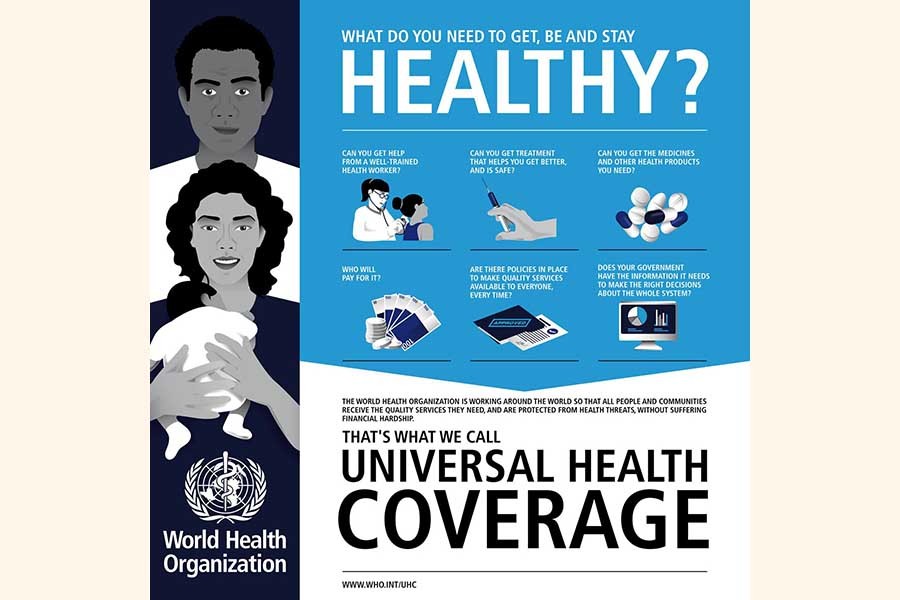Universal health coverage (UHC) proves to be a mirage not just in developing countries like Bangladesh but also in the developed countries in the West. On this count, the participation of 180 people credited with the accolade of UHC champions in a national event on such health coverage is a clear indication that the agenda matters to some people. The participants are in favour of promoting a 'healthy Bangladesh movement'. The issue of UHC, however, should not be confused with what is meant by healthy Bangladesh. UHC is just one part of the broader issue of people's healthy lifestyle and fitness. A whole gamut of issues is involved here. Yet healthcare deserves to be a priority when people fall sick. Not all people can afford treatment of expenses of serious and complicated diseases.
This certainly should not have been the case at least in the rich countries. If a not-so-affluent country like Cuba can ensure a decent healthcare system for all its citizens, the United States of America should not have faced any difficulty in introducing a national health insurance. But notwithstanding his vigorous attempt, Barack Obama's initiative fell flat on Senate majority's opposition. The amount the world spends on manufacture of arms for mass extermination would have met the requirement for health facilities and the care needed for people in times of illness many times over all across the globe. It seems the modern civilisation has got its priorities wrong. Instead of putting the greater portion of resources at the disposal of research and experiments aimed at increasing human and environmental well-being, the larger portion is drained into production of weapons of mass destruction. Life-saving drugs are costly because those are produced by private pharmaceutical companies. Only in rare cases, their production and import are subsidised.
Bangladesh has been struggling to reach health services at the grass-roots level. Community clinics set up for the purpose have already made a difference in the situation but they could not perform to their potential on account of a number of constraints. The chief among them is the reluctance on the part of qualified physicians to stay in remote areas. Facilities are inadequate, medicines are unavailable and training of the staff does not always meet the required standard. This does not necessarily mean that resource constraint is the only impediment to making the health service at such clinics effective.
Institutional infrastructure development in the health sector can solve the twin problem of healthcare and employment. How? The country has been setting up medical colleges but not nursing and paramedical schools. It needs more of the latter rather than the former. Thus trained from 35 nursing and paramedical schools, 45,000 Cubans send home US$ 8.0 billion remittance annually. Similarly, 0.2million Filipinos send US$29 billion. If 64 such schools are set up to be incorporated with the district hospitals, not only will those meet the local demand for such staff but also create a supply line of such trained migrants for earning remittance. The country can also avoid sending domestic helps abroad.


